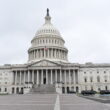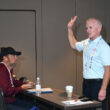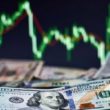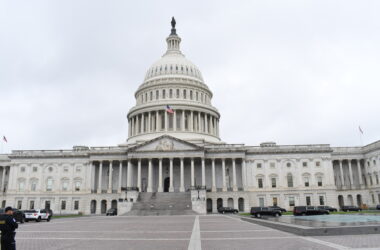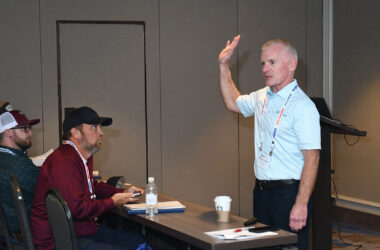The Federal Reserve hit pause on interest rate hikes Wednesday.
The Federal Open Market Committee elected to maintain a target rate for federal funds at 5 to 5.25 percent. It ended a streak of 10 straight hikes in interest rates since early 2022.
“Since early last year, the FOMC has significantly tightened the stance of monetary policy. We have raised our policy interest rate by 5 percentage points and have continued to reduce our securities holdings at a brisk pace. We have covered a lot of ground, and the full effects of our tightening have yet to be felt,” said Jerome Powell, Federal Reserve Chair. “In light of how far we have come in tightening policy, the uncertain lags with which monetary policy affects the economy, and potential headwinds from credit tightening, today, we decided to leave our policy interest rate unchanged and to continue to reduce our securities holdings.”
Powell suggested the choice to hold rates steady was the continuation of the process of moderating policy. He pointed to the three previous increases of 25 basis points, after previous larger increases of 75 and 50 basis points.
“It made sense to moderate our rate hikes as we got closer to our destination. So the decision not to continue hiking every meeting and ultimately to hold rates steady at this meeting, I would say it’s a continuation of that process.”
Jerome Powell, Federal Reserve Chair
“It made sense to moderate our rate hikes as we got closer to our destination,” Powell said. “So the decision not to continue hiking every meeting and ultimately to hold rates steady at this meeting, I would say it’s a continuation of that process.”
The FOMC reiterated its commitment to get inflation down to 2 percent. According to data from Bureau of Labor Statistics latest Consumer Price Index Tuesday, the annual inflation had receded to 4 percent. It is lowest 12-month increase since March 2021. The annual inflation rate was 4.9 percent in April and 5 percent in March.
To reach its goal of bringing inflation down to 2 percent, Powell and the committee indicated the pause could be temporary.
“Looking ahead, nearly all committee participants view it as likely that some further rate increases will be appropriate this year to bring inflation down to 2 percent over time,” Powell said.
Projections placed the terminal rate at the end of 2023 at 5.6 percent. Even with the projected future hikes, Powell suggested it was time to hold steady to fully gage the impact of policy on the economy.
“Nearly all committee participants expect that it will be appropriate to raise interest rates somewhat further by the end of the year,” Powell said. “But at this meeting, considering how far and how fast we have moved, we judged it prudent to hold the target range steady to allow the committee to assess additional information and its implications for monetary policy.”
As the annual inflation has waned, the Core PCE inflation, which excludes volatile food and energy prices, remains elevated at 5.3 percent.
“Inflation has moderated somewhat since the middle of last year. Nonetheless, inflation pressures continue to run high and the process of getting inflation back down to 2 percent has a long way to go,” Powell said.
Even with the elevated inflation, the labor market remains strong, with unemployment at 3.7 percent. The economy has added an average of 283,000 jobs in the past three months.
“There are some signs that supply and demand in the labor market are coming into better balance,” Powell said. “The labor force participation rate has moved up in recent months, particularly for individuals aged 25 to 54 years. Nominal wage growth has shown signs of easing, and job vacancies have declined so far this year. While the jobs-to-workers gap has declined, labor demand still substantially exceeds the supply of available workers.”
Powell said the labor market’s resilience has surprised all analysts.
He also echoed his previous sentiments of a possible soft landing for the economy to avoid a recession.
“I continue to think, and this really hasn’t changed, that there is a path to getting inflation back down to 2 percent without having to see the kind of sharp downturn and large losses of employment that we’ve seen in so many past instances,” Powell said. “A strong labor market that gradually cools could aid that along.
“The committee is completely unified in the need to get inflation down to 2 percent, and we’ll do whatever it takes to get it down to 2 percent.”
The rising interest rates have impacted the used vehicle market and consumers in the past year significantly.
According to Experian’s State of Automotive Finance first quarter report, the average used car loan amount dropped in the first quarter from $28,010 at the start of 2022 to $26,420. But with the average interest rate increasing from 8.67 percent in the past year to 11.17 percent, the average monthly payment grew from $505 to $516.


